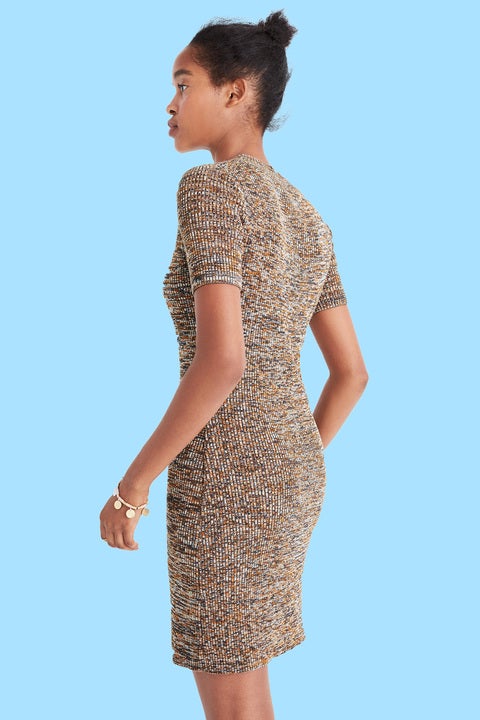
Last week, a seemingly innocent J.Crew ad for a sweater dress hit the Internet and caused quite a stir.
The images, which featured Dominican model Marihenny Rivera Pasible, showed the young lady sporting a messy bun which infuriated lots of people.
The reason? Many commentors felt Marihenny’s hair was not “done“ and possibly another example of how hairstylist oftentimes don’t know how to work with textured hair.
When The Shaderoom posted the pic as a #TSRGreatDebatez, it became abundantly clear, yet again, just how decisive the topic of Black hair continues to be. Commentators on social media seemed to be evenly split between thinking the model’s hair was no big deal, and fit right in with the carefree aesthetic of the brand, while others were vehement that her hair was simply a mess.
The model who, was flattered by the attention, commented on Instagram, “that the brand specifically is to show that clothes can be comfortable wearable and naturally beautiful. So the natural hair and makeup fits right in.”
She went on to say that, “we as human beings are never satisfied with what we get we always want more and still complain.”
It was that comment that got us really thinking about why our only definition of beauty for Black women is one that’s perfectly prim and proper?
A scroll through J.Crew’s website and there are countless images of white women with tousled bed head-like hairstyles similar to the one Marihenny sported. But the only one to garner attention and harsh criticism was the woman of color; and it’s safe to assume that many of the commentators are women of color too.
While the conversation seemingly comes from a place of genuine concern, there have been countless instances when our natural hair has publicly fell victim to ill-trained hairstylists, it also leaves little room for women of color to look anything else than absolutely perfect.
When we first saw the image, we admit we absolutely had a total WTH?!? moment. The image is jarring against the perfectly slayed edges and coiled curls we’re used to. But after thinking about it a bit more, it’s clear that while we as Black women have made great strides in widening the definition of the type of hair that’s beautiful (for the record, that’s all types!) we still have a lot of work to do. It’s not up to any of us to police how Black women wear their hair — whether it’s a style we’d rock or not.
In this case, the model is onboard and happy with how her hair turned out, so therefore we have nothing to debate. Unlike Lupita or Solange, we have no reason to scream don’t touch our hair. This time at least.
